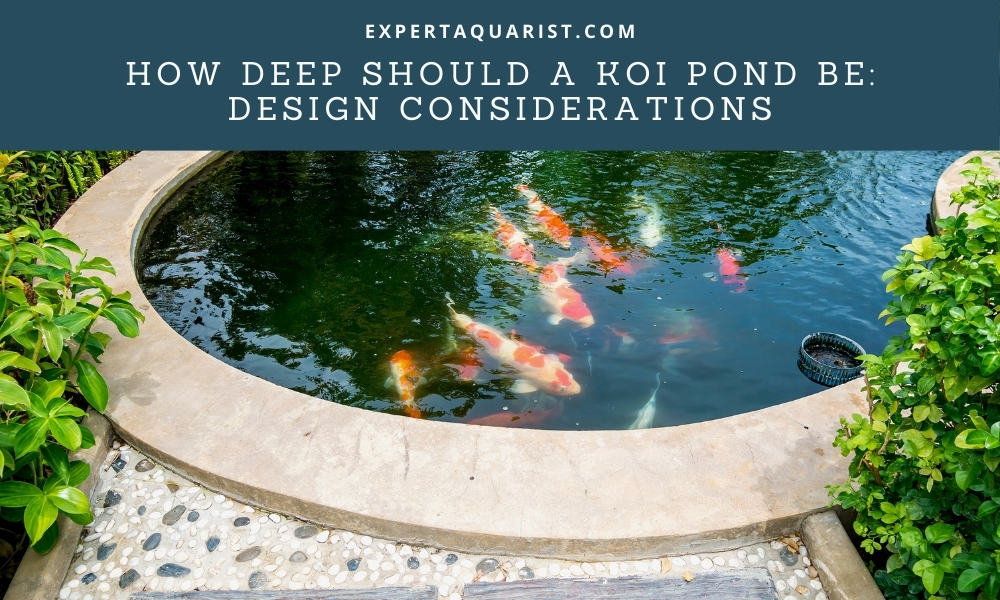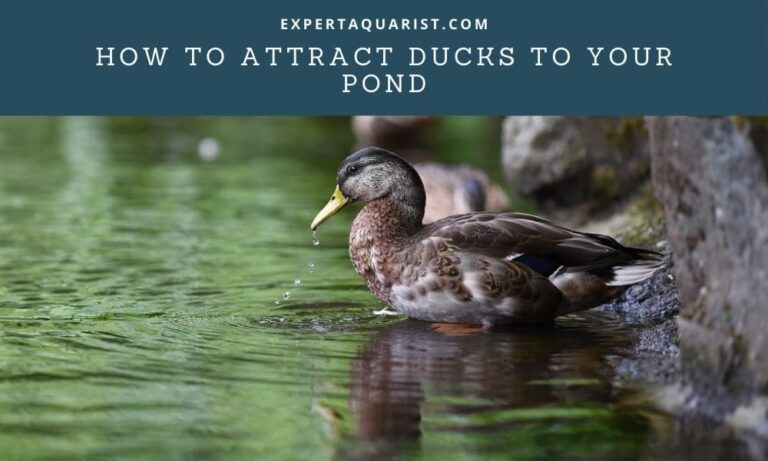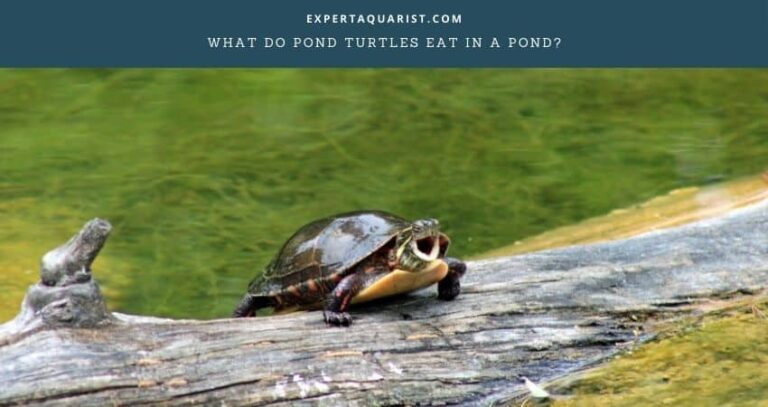Koi is the life of a backyard pond. These beautiful, vigorous, and vibrant little creatures roam around the pond all day, not allowing a single dull moment for the spectator. Sadly, as much as people love koi, most aren’t aware of its perfect conditions; for example- how deep should a koi pond be?
Like everything else, Koi also has its conditions to thrive. A Koi pond can’t be shallower than 2 feet for starters, and it is best to have at least a depth of 3 feet if you want to stock koi.
I’m sure only this much knowledge isn’t enough to get you started, that’s why I added some more useful information below; why not have a look?

The best depth for a koi pond
Koi is a top pick for a backyard or small pond due to their high resilience to adverse conditions. Like, they’ll survive in freezing conditions or even on very shallow ponds like 18 inches deep. However, it’s not best to challenge their survival skills, and we shouldn’t play with lives. So, let’s take it seriously.
Now for serious talk, a koi pond has to be at least 3 feet deep. Although as I’ve said before, there have been instances where they survived even on 18-inch depth; it is not ideal. You’ll be taking the gamble of letting your koi be exposed to predators like herons.
Even if you think that no predator is lurking around, still don’t risk it. Adding hiding spots or caves won’t work if the depth is too shallow, as a heron is able to stand for hours without getting tired.
Also, it is best not to have a tapered pond design. Aquascapes where the sides gently taper are not efficient with koi. It will be better if the sides go straight downwards to the bottom.
While 3 feet is the bare minimum requirement, my personal suggestion to you would be to have a minimum depth of 4 feet, if not more. The cost won’t rise exponentially over 1 ft of extra excavation, but your koi will be able to move more.
How Deep Should A Koi Pond Be For Winter
A 4 feet shallow pond is also suitable for surviving in winter too. But as a rule of thumb, the more depth it has, the more benefit you get (in a realistic margin of course). What do I mean by benefits? A decently large pond that can hold 2000 gallons of water is amazingly efficient at fish growth and maintaining a large fish stock.
Also, in my opinion, you won’t explore the true potential of a koi pond in a shallow pond. The fish waste may have more concentration in a less deep pond compared to deep ponds- where there is more water. So, if possible, try to make it 5 feet deep.
Although hardcore fishkeeping enthusiasts will vouch for 6-8 feet, it has comparatively less merit unless you’re living in a place with extreme weather conditions.
Deciding on a depth is just the start; there are other things to consider if you want to build the best koi pond. Since we’re talking about koi, how about I give you a brief idea about those as well? Take a quick peek:
Additional design considerations for a koi pond
Temperature
While koi are resilient fish that can survive through winter’s harsh conditions, they are delighted when the water is 60-70 degrees Fahrenheit. You should try to maintain that as much as possible. If needed, use a pond heater, especially in winter.
Sunlight and shade
Koi are better off with receiving direct sunlight, but they can only tolerate up to 6 hours of it at best; that’s why you must add cover. You can achieve that by placing the pond near trees or an over-hinged structure to provide ample shade. But I think it is better to go for aquatic plants.
Water lilies are amazing for koi ponds. They can cover around 70% of the surface area, providing enough shade for the fish if they need it.
Aeration
If you ask me what the must-have component in your pond is, I would answer in a heartbeat- “oxygen”. It is as much as important for our little friends as it is for us. To keep the koi oxygenated, it’s best to install a fountain or waterfall.
A fountain will stir the water and keep it moving; also, the falling water droplets will absorb oxygen and let it into the pond. You can use an aerator as well for the best result.
Soil
A standard koi pond can hold up to 2000 gallons of water. If we put it into a scale, it weighs around 8-8.3 lbs at 60 degrees Fahrenheit. So, you must need to have soil that is stable enough to support that load.
Filters
You can’t even dream of having a pond full of koi without filters. They produce a lot of waste, and for the best of your pond, you have to deal with them as soon as possible. If you have a filter, that process becomes more comfortable.
A biological filter will break down wastes and harmful compounds into smaller particles that won’t pose harm to your pond inhabitants. Having a mechanical filter alongside is even better.
Plants
I’m confident you don’t have a bland taste, and if I’m right, then you’ll want some life in your landscape. How to do that? Plants! They add color and a vibrant atmosphere that will surely calm your soul.
As I said before, they provide excellent protection from direct sunlight, and that’s just the start; they also attract bugs that become food for koi. Plus, they keep the algae growth in check and maintain the nitrate level lowered.
All in all, they are a multipurpose convenience.
Maintenance
The bigger the pond, the more effort you have to put in to maintain it. You need to spend 1 or 2 hours every week to check the pH and KH, clean the filters, take out any debris or waste, etc.
You also need to have a look if any of the fish are feeling ill or not. Larger ponds mean abundant fishes, so more time-consuming activity. While I said before to lean on the larger side when it comes to pond size, pick a dimension that is not troublesome to you.
Read Next: Best pond depth for different types of ponds
Handy tips
Here are some additional tips to help make the best koi pond:
- Instead of placing plants inside the pond, it is better to hang them in pots with wires. That way, you can remove them immediately in case of any complications. These issues aren’t seen in deep ponds but likely in shallow ones.
- Your koi pond should have steep sides, and it is a natural countermeasure against predators like raccoons or foxes. Koi are energetic fish, and they jump out of the water from time to time. This way, these hunters can’t snatch them away. Their movement is also good for the pond.
- Installing a de-icer is a good idea during winter; this will keep the koi in your pond oxygenated, and there will be no toxic gases.
- Add netting for extra protections from herons.
Conclusion
Amongst all pond fishes, Koi are the most loved, and there are hardly any pond owners who will dislike them. And today, I am helping you become one of them. I’ve tried my best to clarify some crucial questions you might have about how deep should a koi pond be.
You just have to make it a reality now. Be prepared for a lifetime of commitment towards your koi fish.






